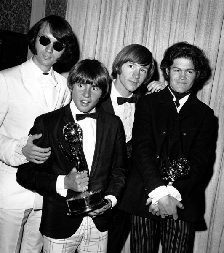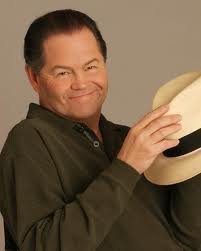
Modern usage
The material of a handkerchief can be symbolic of the socio-economic class of the user, not only because some materials are more expensive, but because some materials are more absorbent and practical for those who use a handkerchief for more than style. Handkerchiefs can be made of cotton, cotton-synthetic blend, synthetic fabric, silk, or linen.
Handkerchiefs are also used as an impromptu way to carry around small items when a bag or basket is unavailable. They could also serve as a substitute for a bandage over a small injury. In the United Kingdom, the habit of wearing a handkerchief with tied corners on one's head at the beach has become a seaside postcard stereotype.
From the late 18th century white handkerchiefs were waved, generally by women (men usually waved their hats), to demonstrate approval at public events such as processions or political rallies.
Using handkerchiefs to accentuate hand movements while dancing is a feature of both West African and African-American traditional dance, in the latter case especially in wedding celebrations. Handkerchiefs are also traditional accoutrements in certain kinds of English folk dance, such as the Morris dance.
Besides their intended use, they could be used for cleaning equipment, polishing shoes, cleaning hands and face, signalling for attention, as a sweat band, neckerchief, as protection from dust inhalation, to repair footwear, cut out pieces to patch clothes, cut up as emergency firearms cleaning patches, Molotov cocktail wick (fire-bomb), hot cooking utensil holder, a makeshift bandage, tourniquet, or arm sling.
The word handkerchief derives from the word kerchief which came from two French words: couvrir, which means “to cover”, and chef, which means “head”; so a handkerchief is a similar cloth in the hand rather than on the head. (In the Middle Ages, kerchiefs were often used to cover the head.)
Then in the 16th century, people in Europe began to carry kerchiefs in their pockets to wipe their foreheads or their noses. To distinguish this kind of kerchief from the one used to cover the head, the word "hand" was added to "kerchief". This was then preferred to wiping the nose on a sleeve.
King Richard II of England, who reigned from 1377 to 1399, is widely believed to have invented the cloth handkerchief, as surviving documents written by his courtiers describe his use of square pieces of cloth to wipe his nose. Certainly they were in existence by Shakespeare's time, and a handkerchief is an important plot device in his play Othello.
A handkerchief was sometimes used by Indian thugs: to take advantage of their victims, the thugs would join travelers and gain their confidence, which would allow them to surprise and strangle the travelers with a handkerchief or noose.
If you want to read more, go here: https://en.wikipedia.org/wiki/Handkerchief
- 1 1/2 pounds ground beef
- 1 (10.5-ounce) can condensed vegetarian vegetable soup
- 1 cup dry bread crumbs
- 1/2 teaspoon salt
- 1/2 teaspoon pepper
- 1/2 teaspoon onion powder
- 3 lightly beaten eggs, used separately
- 2 cups instant mashed potatoes, prepared according to package directions reducing water to 3/4 cup
- Preheat oven to 350º.
- In a large bowl, mix together all ingredients except potatoes and 1 egg.
- On a rimmed cookie sheet or in a 9" x 13" glass baking dish that has been coated with nonstick vegetable spray, form the mixture into an oval-shaped loaf and bake for 1 hour.
- While whipping the instant mashed potatoes with a fork, add the remaining beaten egg and whip until well blended.
- When meat loaf has cooked for 1 hour, remove from oven and drain off grease in the pan. Completely "frost" meat loaf with the potatoes and return to the oven for 15 to 20 minutes or until potatoes are slightly crusted and heated through.

1959 – Lester Holt, American television journalist
On March 8t, National Oregon Day recognizes the Beaver State. Valentine’s Day 1859, Oregon became the 33rd state to join the Union.
Oregon’s climate enjoys the warm Pacific air west of the Cascade Mountains and in the lush Willamette Valley. More extreme temperature ranges are experienced in Oregon’s high desert.
Populations of Nez Perce, Chinook, Mollalla, and others settled along the Columbia River Gorge, Klamath Basin, and points east. Many of the first European explorers to arrive sought the elusive Northwest Passage
The Corps of Discovery Expedition followed the Colombia River Gorge, reaching the Pacific Ocean in November of 1805. They would winter at Ft. Clatsop. Soon, pioneers would follow along what would become the Oregon Trail.
The gorge was created from volcanic lava flows and glacial floods. Windsurfers flock to the Columbia due to the powerful, steady winds off of the Cascade Mountains. Kayaking, biking, hiking, skiing and many other outdoor adventures can be found up and down the Gorge, but its icy crown is Mt. Hood. The Stratovolcano’s last eruption occurred in 1865 and was named after Lord Samuel Hood.
South along the Cascade Range, a sleeping volcano forms the mysterious Crater Lake. A well-planned hike along the trails to the remote brilliant, blue waters of the deepest lake in the U.S. is worth the effort. The pristine volcano is a wonder to see. Eastern Oregon takes on the color of a sunset in the undulating Painted Hills near Mitchell.
HOW TO OBSERVE
Explore all the wonders of Oregon!














1 comment:
Sending you warm wishes from Southern California :-)
That was really interesting. Read on the history of handkerchiefs.
Today’s recipe certainly intrigues!.
Enjoy your day.
Blessings, Lydia.
Post a Comment